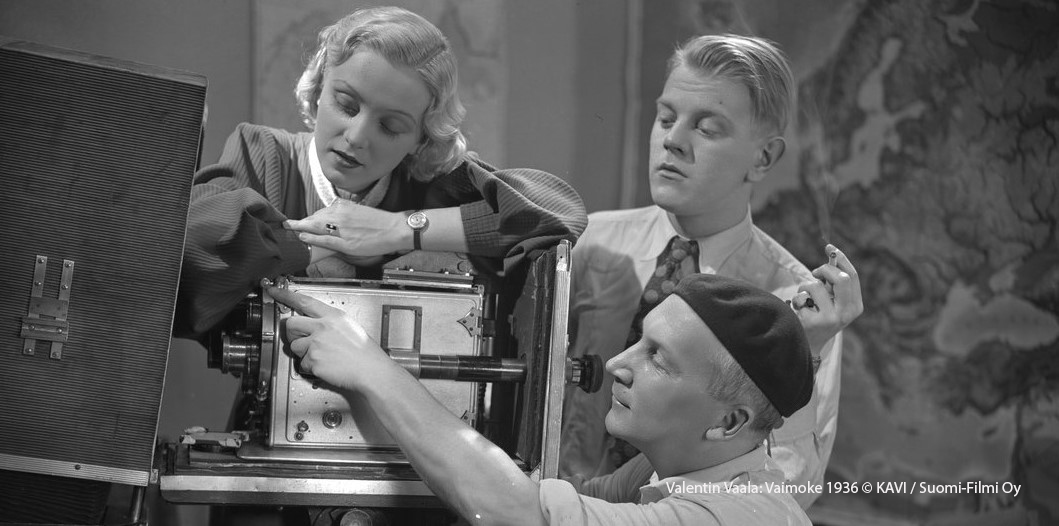
About
The MoMaF project concentrates on Finnish fiction films, as documented by the Finnish National Filmography, which comprise 1,545 titles in total (situation at the end of 2017). This number includes all fiction films, 1,300 titles, and long documentaries, 245 of them, that have been released in a movie theatre in Finland. Some of the films have not been preserved, but the majority of the material is available and digitised by the National Audiovisual Institute (KAVI). Therefore, there is now a unique possibility to explore Finnish society in the making through this audiovisual prism. The main title of the project, Movie Making Finland, refers to the process of ‘making’, not only to the making of films but to the making of a nation, the modernisation of Finland. Modernisation means here the transformation of the Finnish society from a rural, agrarian society into an industrial, urbanised society, and thus to a new way of life.
The project asks:
- How has cinema imagined and interpreted Finnish modernisation and its discontents?
- How can speech recognition, image analysis and natural language processing be combined in developing a methodological toolbox for the study of historical change in audiovisual cultural heritage, in this case Finnish fiction films, and how can these findings be incorporated into a film historical and cultural historical content analysis?
The project applies, adapts, and further develops state-of-the-art methods for speech recognition and video content analysis, producing textual transcripts and scene descriptions of all movies in the collection. Subsequently, the MoMaF project applies language technology methods to analyze the transcriptions as well as other available metadata to uncover the themes and other features relevant to answer the bigger cultural-historical question on how Finnish film imagined and interpreted modernisation.
The project results in novel methodological and algorithmic improvements, resulting from the need to deal with processing of challenging audiovisual data not matching the training data available to the methods. A strong focus is therefore placed on unsupervised and semi-supervised domain adaptation. As a result, through its interdisciplinary cooperation, the project produces not only a novel way of analyzing historical audiovisual material but also an in-depth interpretation of how films in the end interacted with their cultural surroundings and contributed to the transformation of Finland during the twentieth century.
Contact:
- Hannu Salmi (hansalmi@utu.fi) University of Turku/School of History, Cultural Research and Art Studies, Consortium director
- Filip Ginter (figint@utu.fi) University of Turku/Department of Future Technologies
- Mikko Kurimo (mikko.kurimo@aalto.fi) Aalto University/Department of Signal Processing and Acoustics
- Jorma Laaksonen (jorma.laaksonen@aalto.fi) Aalto University/Department of Computer Science